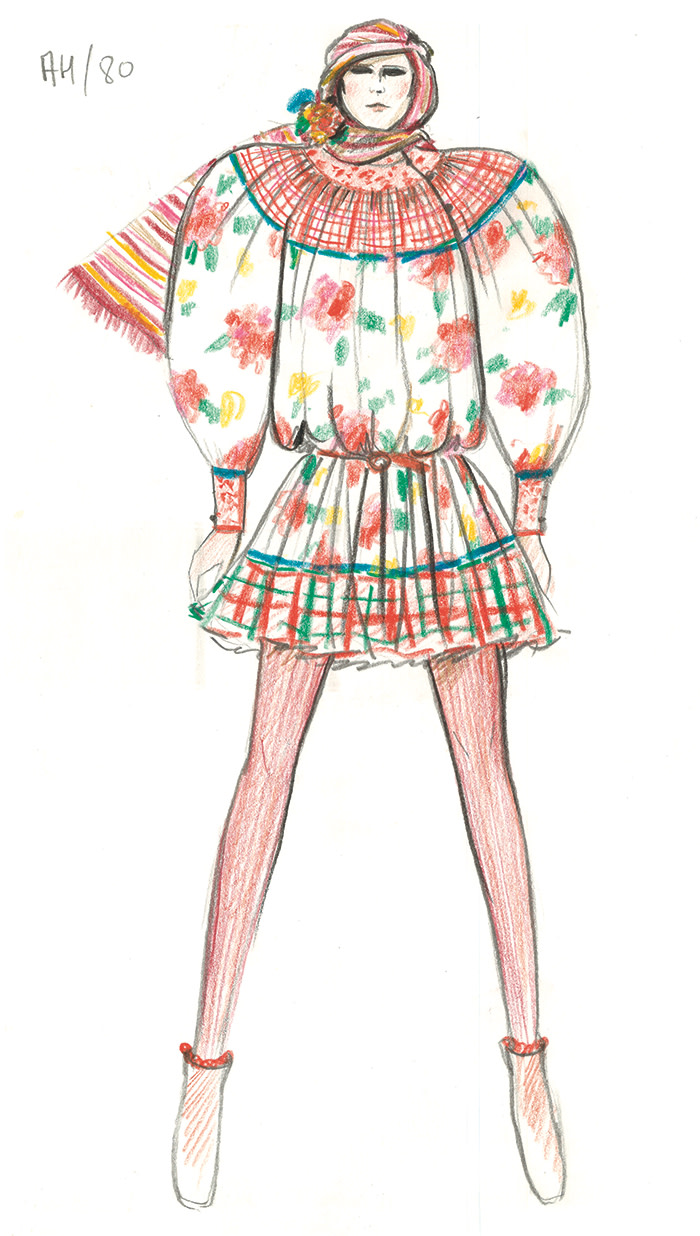Kenzo Takada — the journey from ‘Jungle Jap’ to Kenzo

Simply sign up to the Style myFT Digest -- delivered directly to your inbox.
“I was once told that it was impossible for a Japanese man to work in the fashion industry in Paris,” says the designer Kenzo Takada from his home in the French capital. “Men weren’t allowed into design schools. Being creative was not accepted in Japanese society in the 1950s. And more than anything, my parents opposed the idea of me working in fashion.”
To say that Takada defied expectations is something of an understatement. In 1970, he founded the fashion house Kenzo — one of the most important brands to emerge from Paris in the 1970s and today owned by French conglomerate LVMH. He was an early disrupter: presenting Spring collections in spring, in a see-now-buy-now retail format 45 years before the model was more widely adopted; and staging ready-to-wear shows during couture season, in his shop, before the concept of ready-to-wear — begun in 1973 — even existed.
“By the end of the 1970s, Kenzo was considered the number one selling brand worldwide,” says Takada, now 79, of the whirlwind days of his early career. That career is now being celebrated in the biography, Kenzo Takada, written and curated by his friend Kazuko Masui and her daughter Chihiro. The book was conceived in 1999 as a published collection of sketches, and took on a more ambitious format after Kazuko’s death, when Chihiro assumed the project. Twenty years later, it recalls the 30 years Takada spent at the brand. Kenzo, which is now under the direction of Carol Lim and Humberto Leon, will turn 50 next year.

Kenzo’s beginnings were inauspicious. When Takada arrived in Paris in 1965, having travelled from Tokyo via Hong Kong, Saigon and Mumbai, he was disappointed by what he found. “Paris was dark, cold and not at all what it looked like in the magazines,” he says. In the early days, he sold sketches to couture houses for 25 francs a piece. In 1970, he opened a tiny boutique at 43 Galerie Vivienne and launched his brand under its first name, Jungle Jap. “I wanted to blend the two things I loved — the jungle and Japan,” he says of the brand name. Cash strapped, he painted the walls himself. “When I started, I had Henri Rousseau’s 1910 painting The Dream in mind,” he says of the brand’s lush floral aesthetic. “It took off.”

The response was immediate. “Elle magazine put it on the cover, and straight away there was high demand.” With no factory partnerships or fabric wholesalers to call on, every garment was hand-sewn by Takada and his team. “I had no money, so I went to buy fabrics at Marché St Pierre in Paris and used textiles brought over from Japan and we sewed them together.”

The bold, unusual patterns were a major factor in Takada’s early success. “Floral patterns were widely used within kimonos and textiles, and there has always been a strong presence of nature in Japanese art,” he says. His use of cotton was also a factor: a fabric rarely used in high fashion at the time, it allowed Takada to play with bigger proportions and silhouettes. The clothes — puffed sleeved poets’ blouses, pleated harem trousers and flowy kimonos — were unrestrictive, youthful and in short supply. “I did not think specifically about see-now-buy-now,” he says. “It was just logical for me to show Spring in spring.”

The brand became Kenzo after a fashion show in New York, in 1976 (the American market considered Jungle Jap too pejorative), and his shows became extravaganzas. In 1977, he staged one at Studio 54; Grace Jones sang and Jerry Hall modelled. At another, held in a circus tent in Zurich, Takada rode on the back of an elephant.

Kenzo’s trajectory continued to soar: in 1983, Takada introduced the men’s collection, a home collection debuted in 1987, followed by fragrances in 1988. The LVMH buyout came in 1993. “At the end of the 1980s and early 1990s, a few of my close friends passed away, including my business associate and partner in life, Xavier,” says Takada. “I decided to sell the company for various reasons . . . It was becoming more commercial. Fashion was changing, the pace was changing.”

Takada remained at the house until 1999. It has now been two decades since he retired. “I feel relieved,” he says. “It was heartbreaking to finish the book after Kazuko died. But it’s a memoir of my achievements in the industry. I’m proud of it.” Brimming with sketches, show images and photographs from his personal archive, the biography has allowed Takada to relive every moment. Not that he could ever really forget. Much like the elephants.

‘Kenzo Takada’ by Kazuko and Chihiro Masui, ACC Art Books, £55
Follow @FTStyle on Twitter and @financialtimesfashion on Instagram to find out about our latest stories first. Subscribe to FT Life on YouTube for the latest FT Weekend videos
Comments